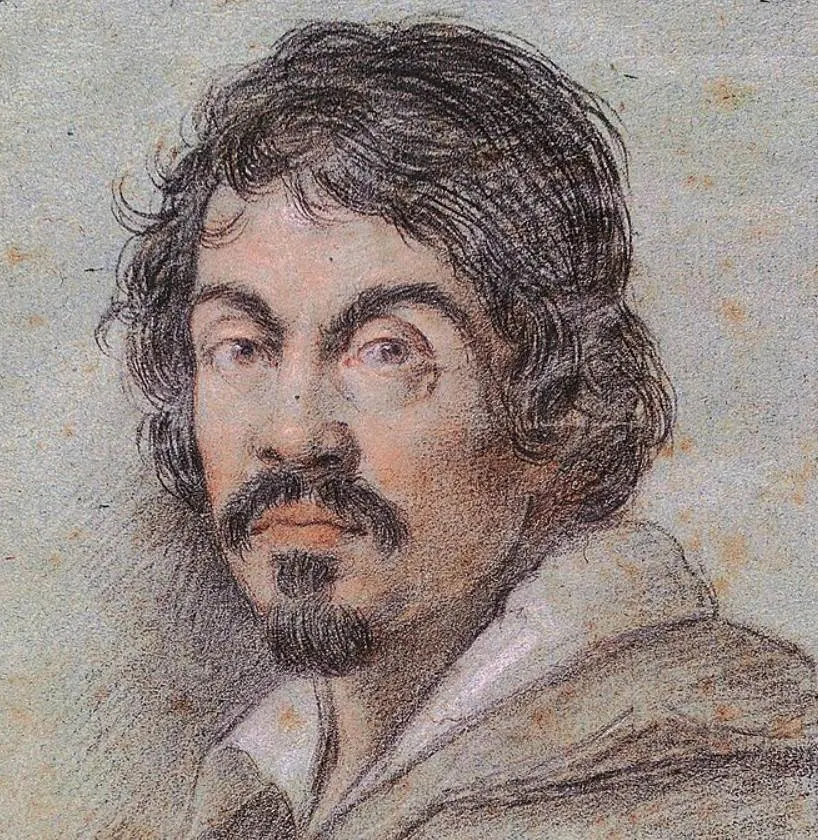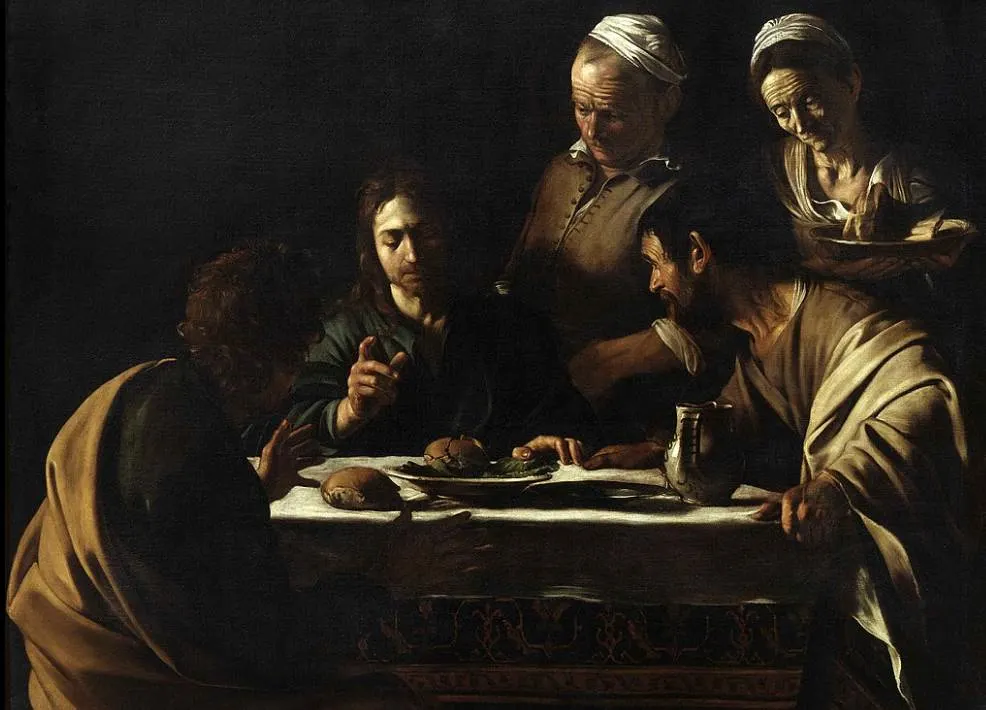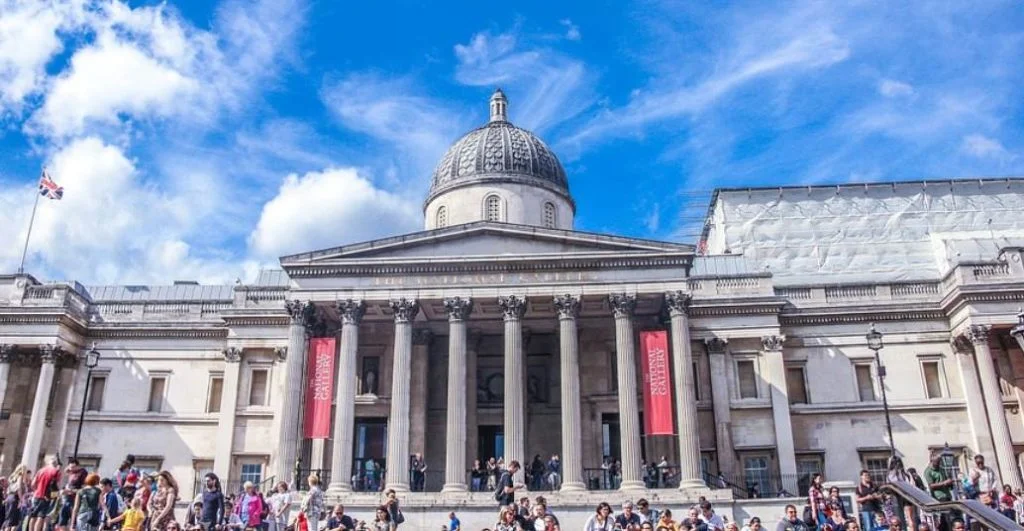A man named Michelangelo Merisi da Caravaggio (1571-1610) was one of the most eccentric but also troubled characters in the history of art.
The style of the Baroque artist was nothing short of revolutionary in the late 16th and early 17th centuries, something that somehow overshadowed his peculiar behavior.
He produced multiple masterpieces in a career that was abruptly cut short in mysterious circumstances. In this article, we’ll take a closer look at one of these called “Supper at Emmaus,” a fascinating painting of the Baroque era.
1. It was painted shortly after Caravaggio became famous
A mysterious event in Milan in the early 1590s, the city that he was born in, resulted in the young artist fleeing to Rome. He didn’t have a dime in his pocket and was barely wearing clothes when he arrived here, yet managed to slowly find his way in the city.
He was able to sharpen his skills in the workshop of renowned Mannerist artist Giuseppe Cesari (1568-1640) and started painting self-portraits. “Basket of Fruit” and “Young Sick Bacchus” are great examples of this early period.
Cesari was the favorite artist of Pope Clement VIII (1536-1605) and the talent of the young Italian artist eventually got noticed by the wealthiest people in Rome.
He produced Supper at Emmaus in 1601. This was shortly after he earned the first commissions that turned the young artist into a renowned master in Rome, including “The Calling of St Matthew” (1599-1600), at the turn of the century.

2. It was commissioned by an avid art collector in Rome
Being recognized by the Catholic church through his master Cesari meant that Caravaggio came in contact with numerous wealthy people. These include both rich clergymen and members of renowned families in Rome.
Supper at Emmaus was commissioned by an Italian nobleman named Ciriaco Mattei, the brother of Italian cardinal Girolamo Mattei. Both were members of the House of Mattei, one of the most powerful families in Rome at the time.

It’s also mentioned that Caravaggio briefly lived at the opulent palace in Rome called the “Palazzo Mattei” in 1601.
Ciriaco was one of the most famous patrons of the arts at the time and supported many aspiring artists. This includes Caravaggio from which he also commissioned the painting “John the Baptist with a Faun” and “The Taking of Christ,” both completed in 1602.

3. It depicts a Biblical story in which Jesus appears to some of his followers
The painting depicts a story taken from the Gospel of Luke 24: 30–31. This story talks about the appearance of Jesus Christ to some of his followers after he died. The Gospel mentions:
He took bread, and blessed it, and brake and gave to them. And their eyes were opened, and they knew him, and he vanished out of their sight.
Emmaus is the town in which this remarkable event presumably took place, hence the name. Jesus appears in front of Luke, one of the Four Evangelists, and Cleopas, one of the early Christians who is only known from this story.
Luke is the man sitting on the left wearing green torn clothes. Cleopas can be recognized for wearing a scallop shell of a pilgrim on the right.
4. Jesus appears incognito to his followers which comes as a shock
Caravaggio had the unique talent of capturing a moment of shock, including this one. After all, Jesus appears unbearded, something that initially hid his true identity.
The painting depicts the moment that Jesus makes himself known. Luke can be seen holding his chair, ready to stand up from the shock, Cleopas is depicted with his arms spread wide from the surprise.
The man standing in the background is left in the dark, mainly because he appears to be oblivious to what is going on.

5. The artist also included one of his still-life trademarks
Caravaggio left the background blank and this was for the reason that he wanted to put a high emphasis on what is going on in the foreground. This also includes the still-life that is on the table.
The supper consists of bread and roasted chicken, as well as a basket of fruit that is on the edge of the table. He painted it in such a way that you want to push it further, a clever element to invite the viewer into the scene.
The basket of fruit was painted amazingly realistic. The choice of including this basket was criticized by some contemporary critics because they deemed it impossible for these fruits to be ripe at the same time of the year.
Then again, the appearance of a dead man is equally unlikely, another remarkable metaphor integrated by the brilliant artist.

6. Caravaggio produced a similar painting 5 years later
The main version of Supper at Emmaus was completed in 1601. The artist painted a very similar work 5 years later which depicts the same story and which features a similar composition.
The colors of this version, which was probably painted in May 1606 when he was hiding after murdering a man in Rome, are much darker. The faces of the people look worn out and it’s assumed that he made some mistakes, including the ear of the man on the left.
This might hint at the fact that he didn’t have a lot of time to complete the work. It’s believed that the innkeeper’s wife, a figure not present in the original version, was added without much planning.
This painting is part of the collection of the Pinacoteca di Brera in Milan and has dimensions of 141 × 175 centimeters (56 × 69 inches).

7. How big is Supper at Emmaus by Caravaggio?
What’s remarkable about both paintings is that the figures are about life-sized, which means that these are pretty big works of art. They are both similar in size, although the original version is slightly bigger.
The oil on canvas painting has dimensions of 141 × 196.2 centimeters (56 × 77.2 inches).
8. Where is the painting located?
The painting was owned by George John Warren Vernon, 5th Baron Vernon (1803-1866) in the 19th century. It was acquired by the National Gallery in London in 1839.
Today, you can still admire this magnificent work of art in Room 32 of the National Gallery in London. It hangs together with 2 other works by the artist, including “Boy Bitten by a Lizzard” and “Salome receives the Head of John the Baptist.”

